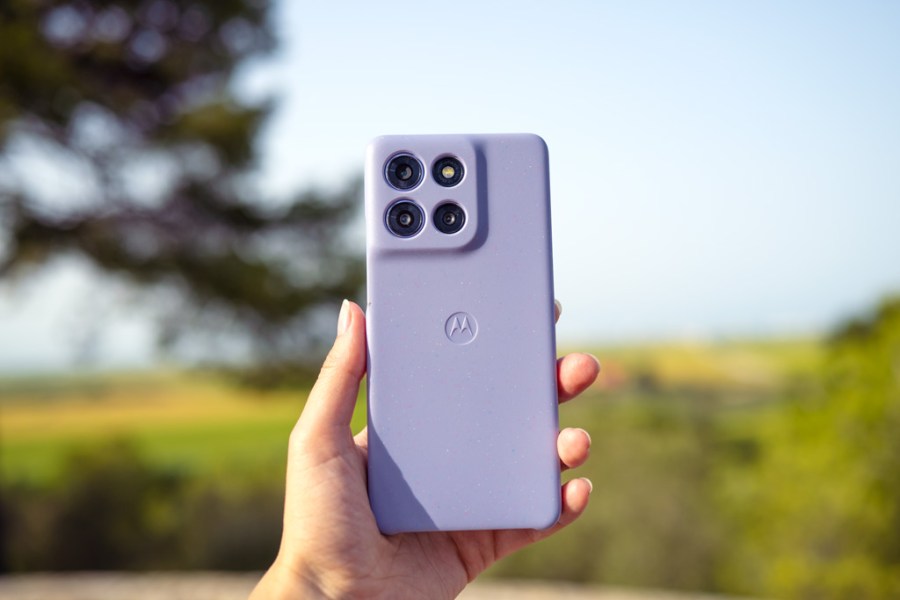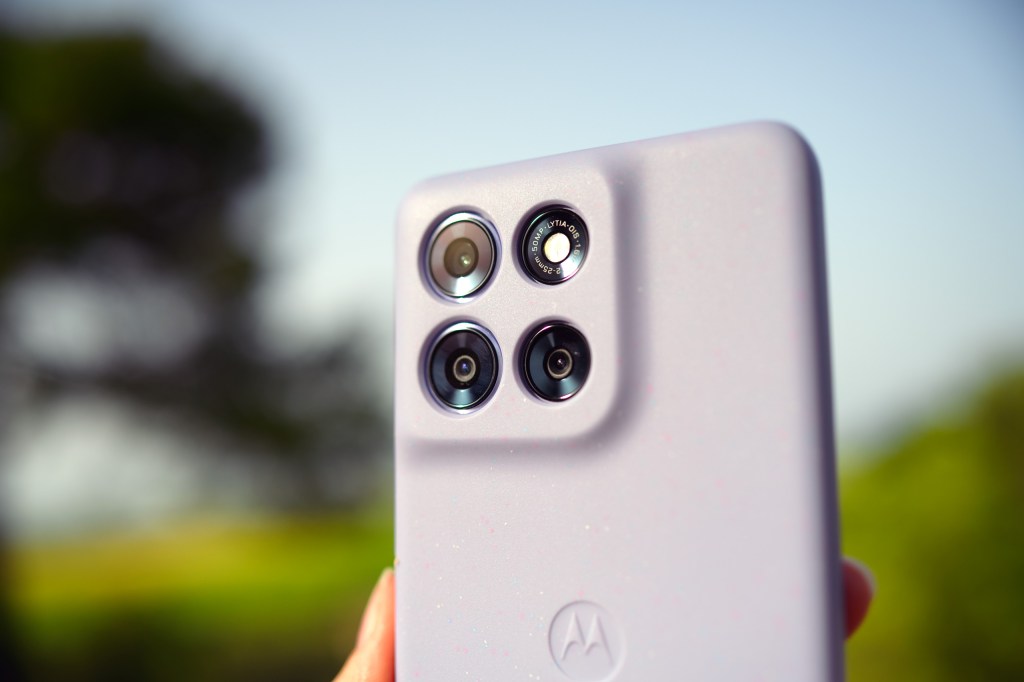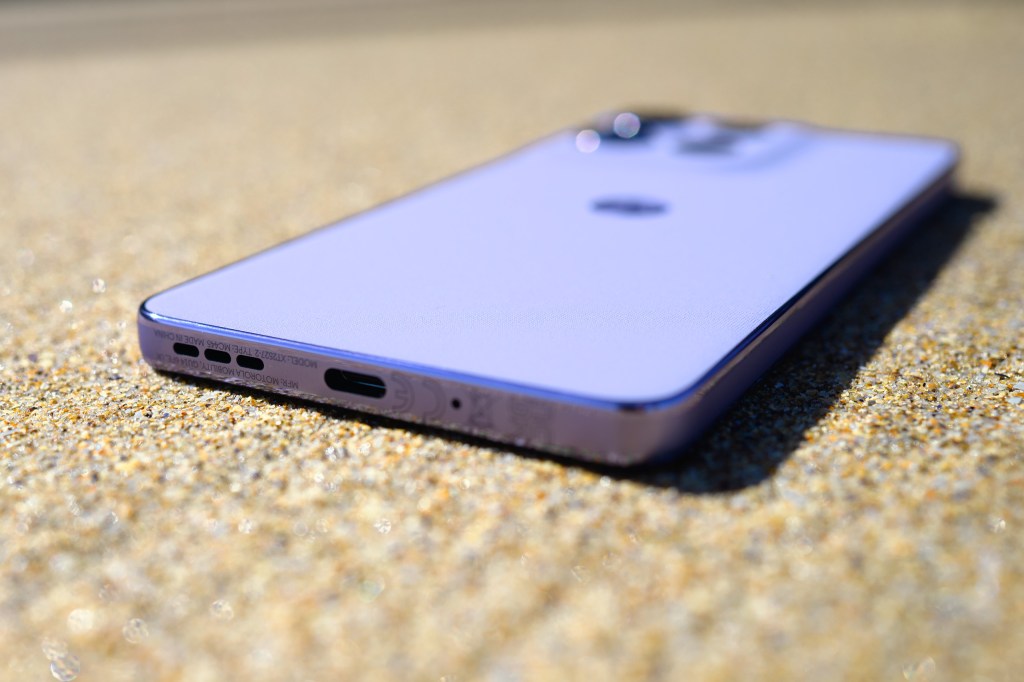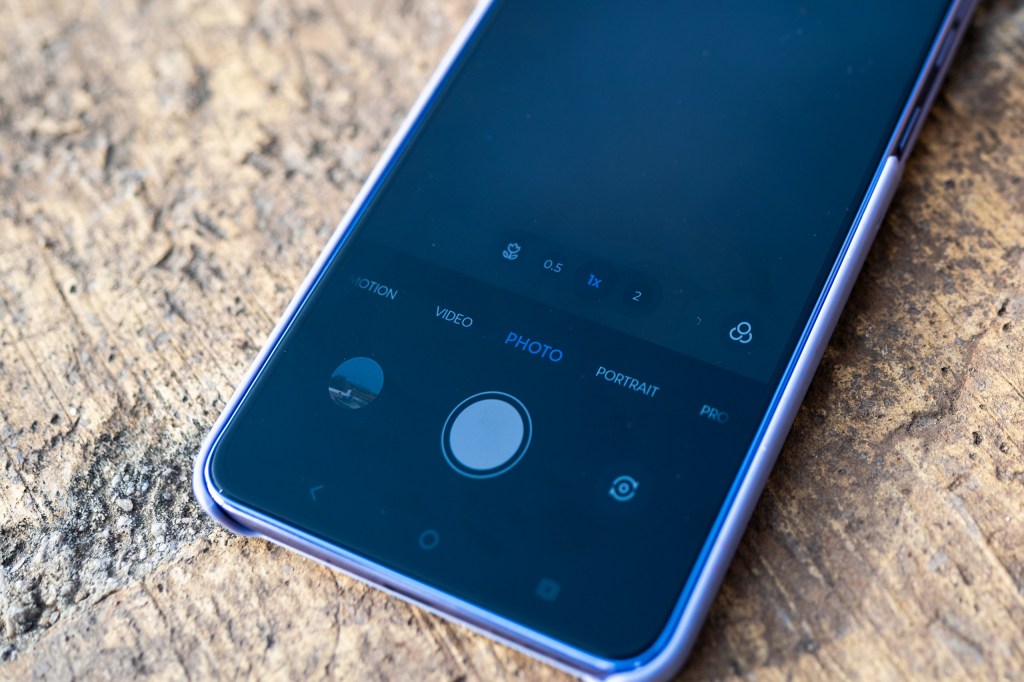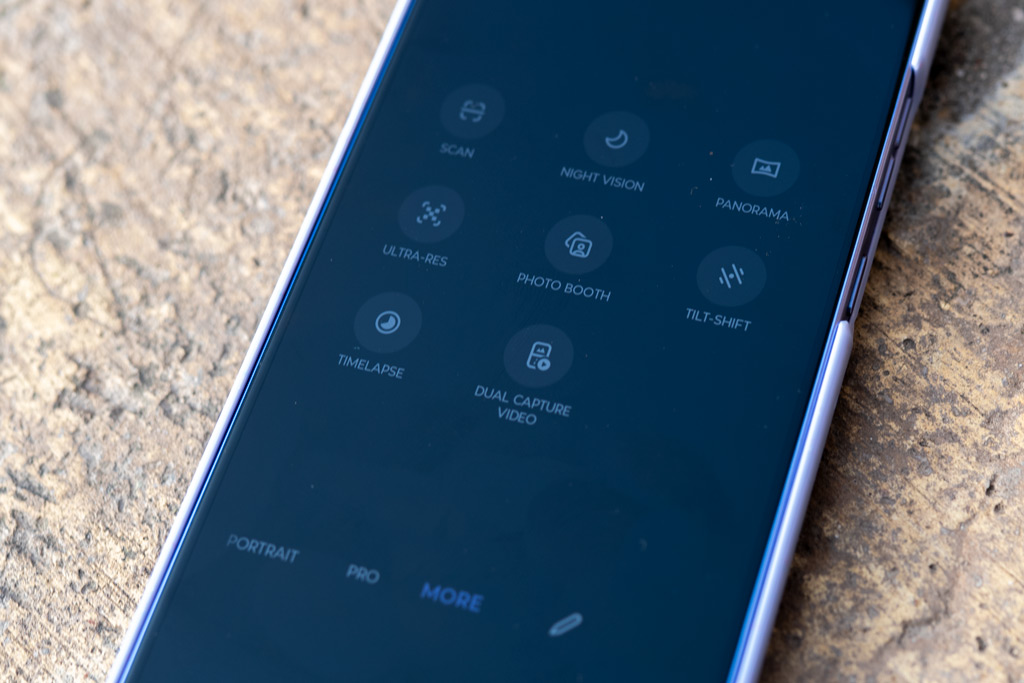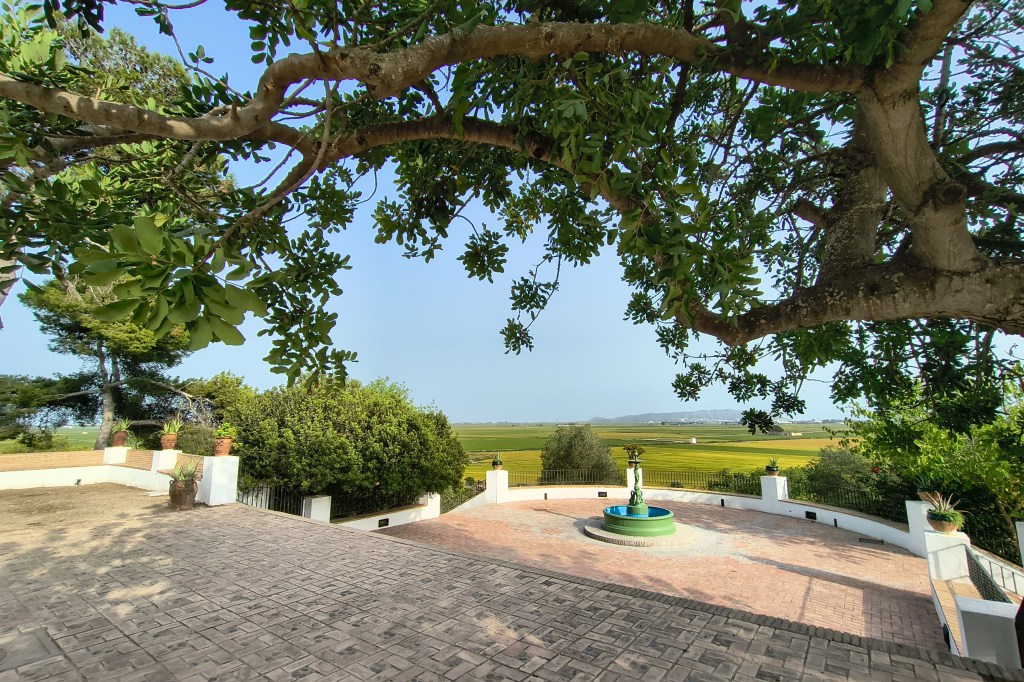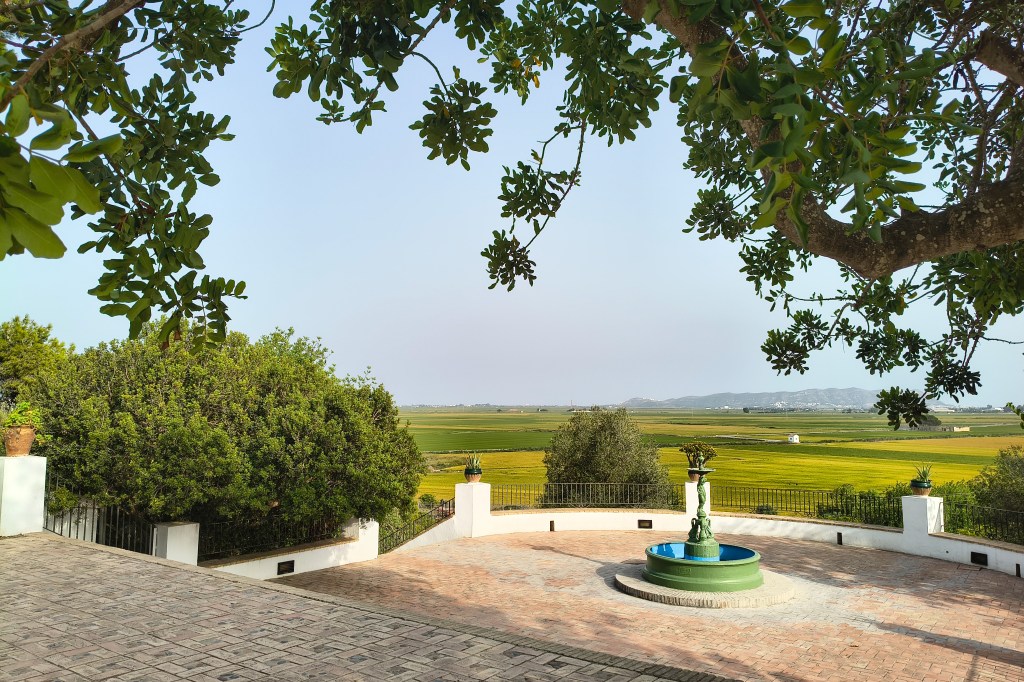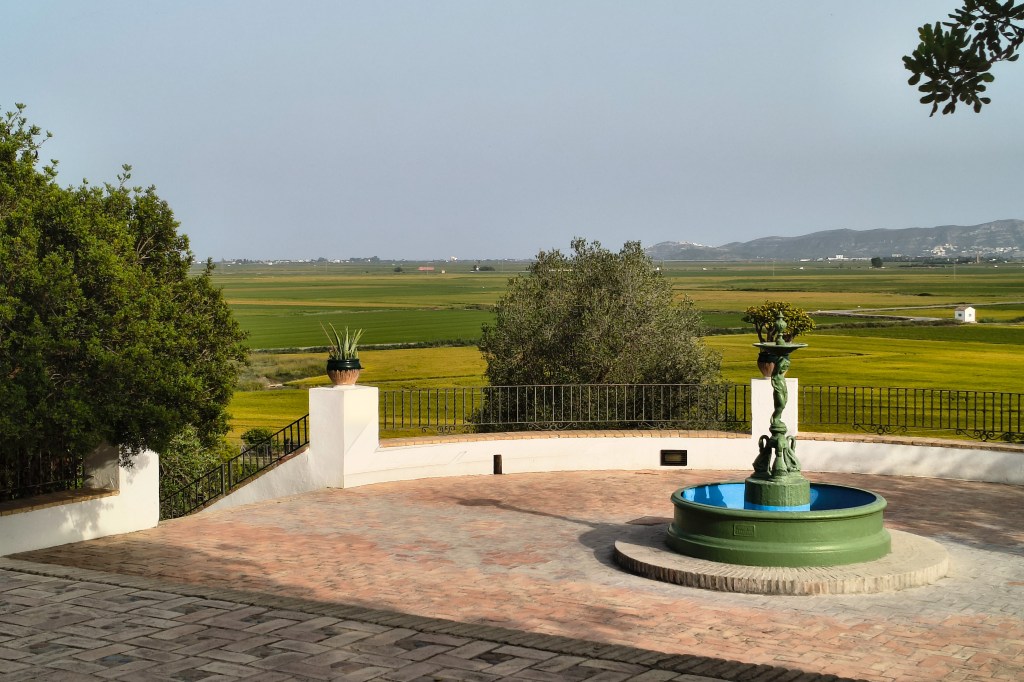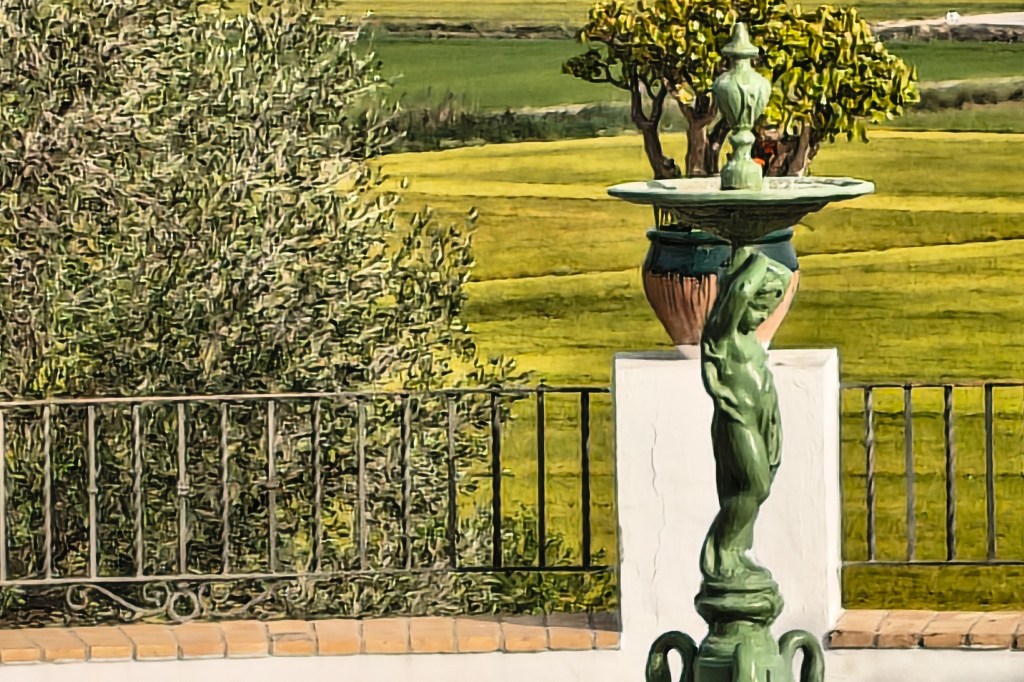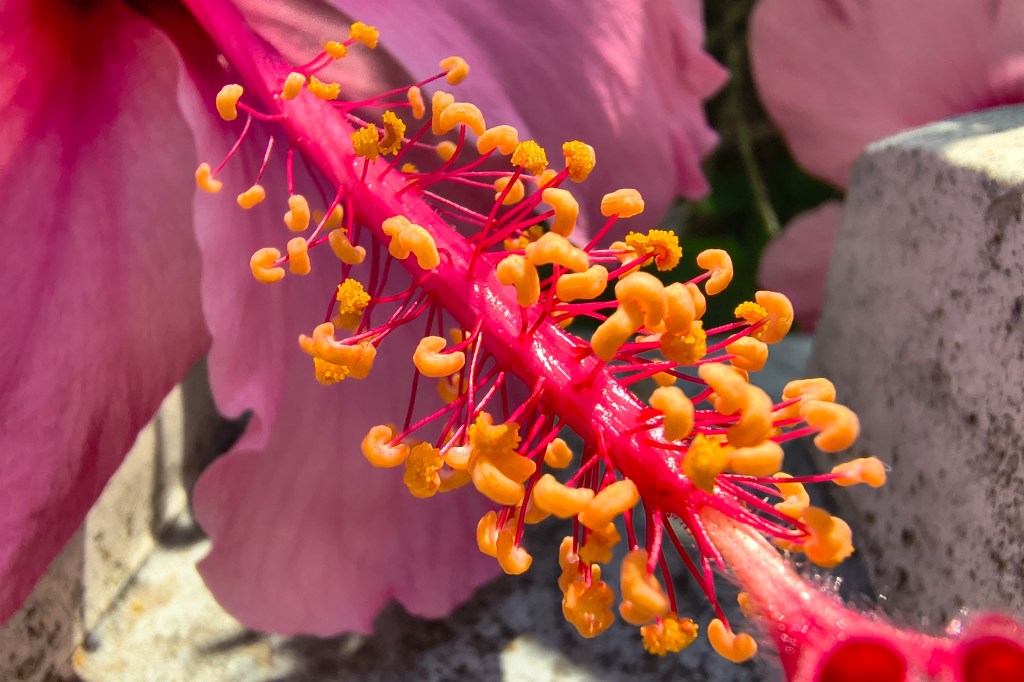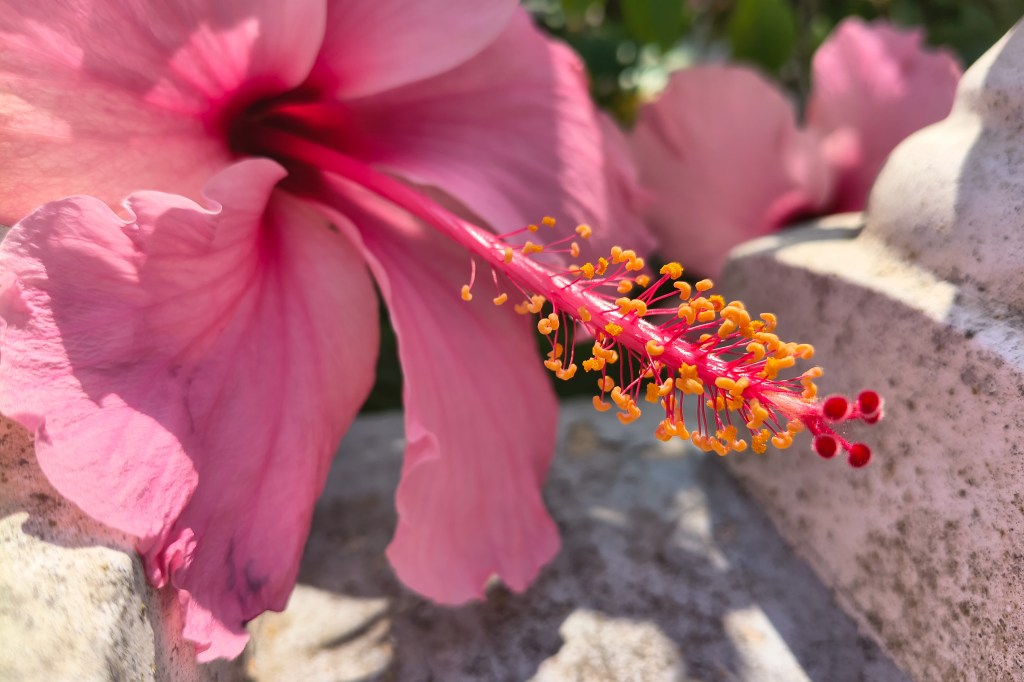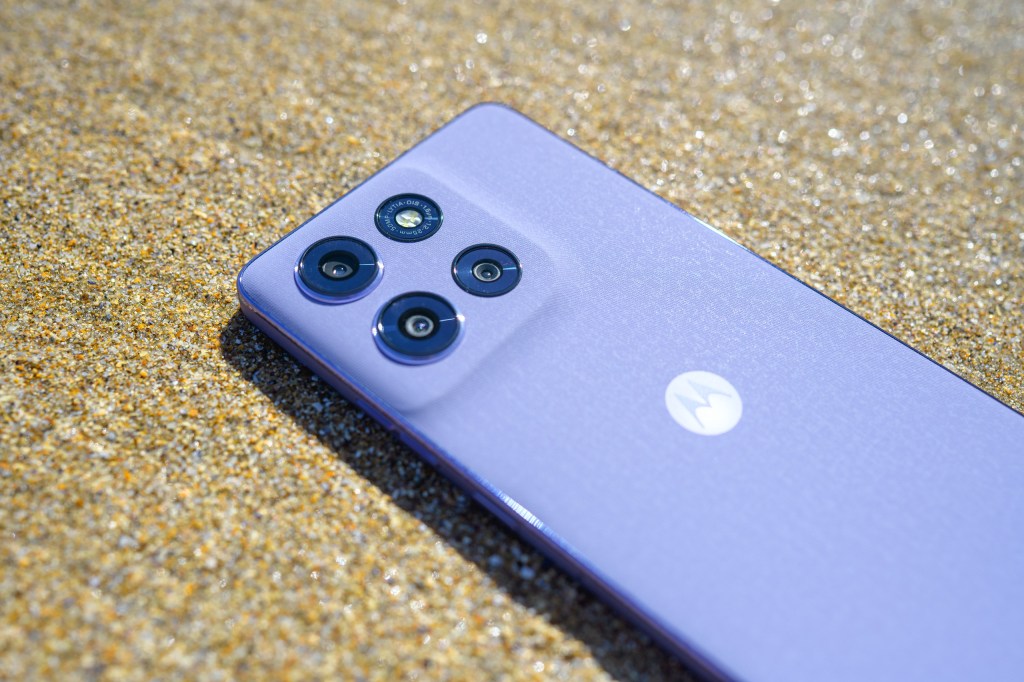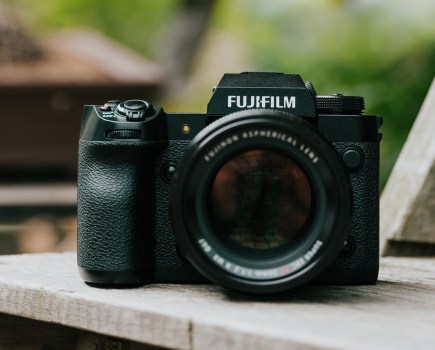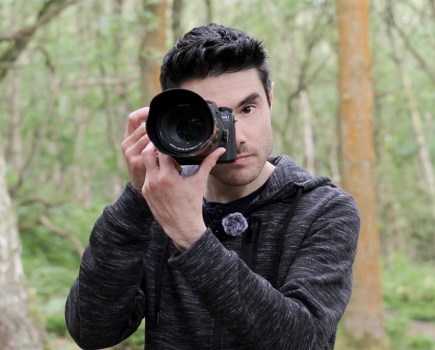Amateur Photographer verdict
The Moto G86 is a solid option for everyday snaps at a true budget price. While the ultra-wide unit lags behind, the main camera and overall durability makes it a great value choice- Capable main camera with OIS
- Large and bright screen
- Dedicated Macro mode
- Good value
- Ultra-wide camera only 8MP
- No dedicated telephoto lens
Motorola’s G-series, which represents the firm’s budget offering, received three new handsets this year. All feature a dual camera setup and are priced below the £300 mark, with the Moto G86 sitting between the Moto G56 and the G86 Power. The G86, just like the rest of the lineup, offers affordability and good battery capacity, with pared-back, but capable cameras; it might even make it onto our list of best budget smartphones for photography.
Moto G86 at a glance:
- 50MP f/1.88 wide, OIS, PDAF 26mm equiv.
- 8MP f/2.2, ultra-wide with Macro Vision, AF, 13mm equiv.
- 32MP f/2.2 selfie camera, 22mm equiv.
- 6.67inch, 120Hz screen, 4500 nits peak brightness
- 4K60p video main, 4K30p front/rear
- 5200mAh (30W charging)
- 161.21 x 74.74 x 7.87mm, 185g, (IP68&69)
How I test phones
I review smartphones from the perspective of choosing a smartphone for its photography and camera performance. I look at what the Motorola G86 offers, and the features included for photography and video, paying particular attention to the cameras on the phone, photo editing capabilities, the output from each different lens, and the features offered.
Moto G86 – Features
The double camera setup gives you a 50MP wide-angle main camera with f/1.8 aperture and OIS (optical image stabilisation) and an 8MP ultra-wide camera with Macro Vision and f/2.2 aperture. For selfies, you get a 32MP f/2.2 camera with fixed focus. Both the main and selfie cameras use pixel binning, so they output images at 12MP and 8MP. Unlike the G56, the 8MP ultra-wide and macro camera has autofocus and gives a 13mm equivalent field of view.
You get 4K UHD 60p video recording on the main camera, while the rest offers 4K UHD 30p recording and slow motion in FHD 120fps and HD 240fps.
Moto G86 – Build and Handling
As I mentioned, the rear camera module incorporates a flash unit and an ambient light sensor next to the two cameras, making them easy to confuse with additional camera units. The camera isle is covered in the same material as the rest of the back, a textile-like finish which Motorola calls Soft Luxe Texture. The sides have a shiny metallic finish with a little embossing at the edges. With a 6.67in screen, this isn’t a small device, so it’s nice that the textile finish provides a really good grip besides being quite stylish.
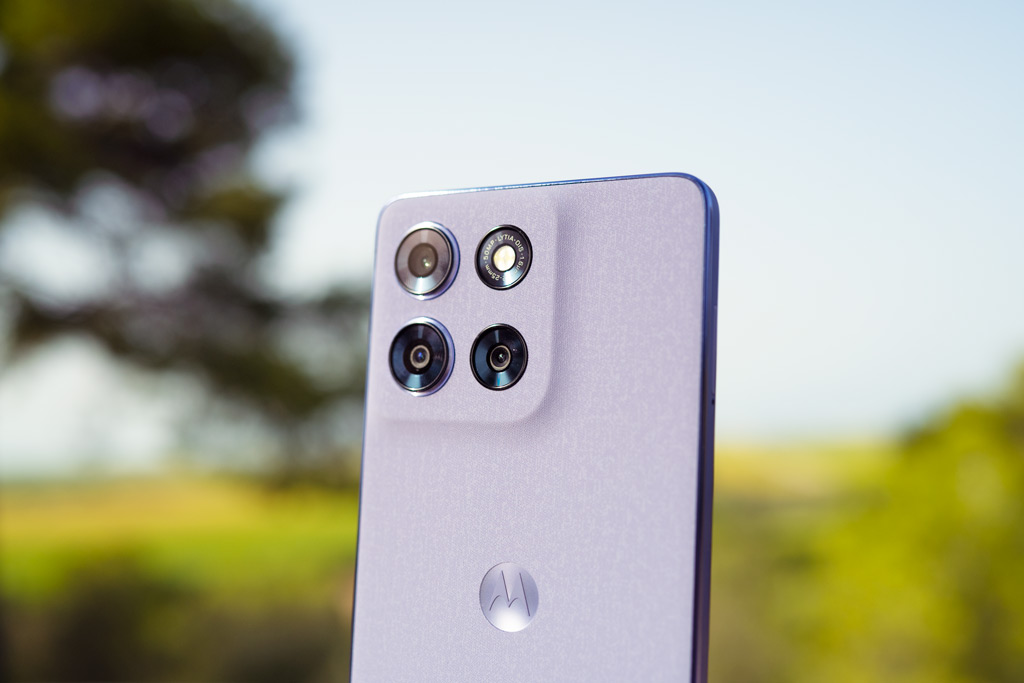
The pOLED display benefits from a 120Hz refresh rate, and the latest Corning Gorilla Glass 7i screen, so you get seamless video playback, while the 4500nits peak brightness makes it easy to see even in bright sunlight.
Receiving the highest IP68 and IP69 water and dust resistance credentials, and a better screen, it should withstand immersion up to 30 minutes in 1m depth, high-pressure water jets, and the general knocking about you would expect. Motorola kindly supplies it with a hard plastic case to further protect it from scratches; however, the textile finish is so nice that I would be tempted to leave the cover off.
There is a good-sized, 5200mAh battery that supports 30W fast charging. The G86 comes with a USB to USB-C charging cable, and just like with most recent smartphones, the original Motorola charger is sold separately.
It is available in Spellbound, Golden Cypress, Chrysanthemum and Cosmic Sky Pantone colours. In this review, I tested the pastel purple coloured Cosmic Sky version.
Moto G86 vs Moto G86 Power
The G86 Power is equipped with a large 6720mAh battery, the largest battery in a Motorola phone to date, whereas the regular G86 has a smaller, 5200mAh one. However, even the latter should still see you through a whole day and potentially more.
The two devices share almost identical specifications, if not for their battery size and the subsequent added weight. But even those differences are nominal between the two versions. From a photography point of view, they offer the exact same cameras, so the choice will come down to the large battery offered with the Power version.
Moto G86 – Native Camera app
A quirky hand gesture opens the camera app, hold the phone and shake your wrist twice up and down quickly, and the default photo mode opens. You get a simple and easy-to-navigate photo shooting menu with the usual shooting modes: Photo with Macro, Portrait, Pro, Video and Slow Motion in the main screen, while under the More tab, there is a dedicated Night Vision, Ultra-Res, Tilt-shift and Time-lapse mode as well as a Dual Capture video.
I find that there’s always a mode under the More tab that I would rather have ready just under my thumb, so I especially like that Motorola lets you customise the Moto G86 photo app and move modes to the main selection and vice versa.
Adjusting focus and exposure is quick, either by default or as you tap on the screen. Unlike the cheaper G56 version, you have a dedicated macro mode available as part of the main Photo mode, utilising the 8MP ultra-wide camera.
Moto G86 – Image quality
Images from the ultra-wide (0.5x) camera are good in adequate lighting, but in night scenes, the lower resolution sensor’s limitations start to show. Even though you get generally good results, colours appear more saturated compared to the main (1x) camera. Backed by the Sony sensor, the main 1x lens is the one I relied on in most scenarios. With higher resolution, Phase detection autofocus and optical image stabilisation, results are good, especially for social media use. In high contrast scenes, however, HDR is automatically activated and can overcompensate at times.
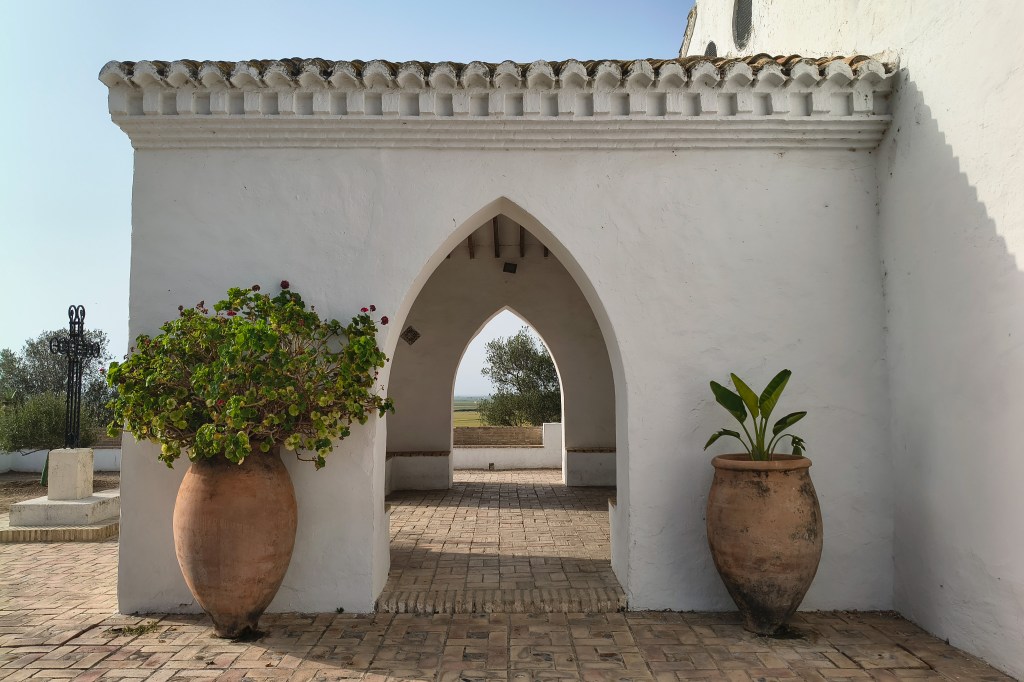
As there’s no telephoto camera on board the 2x, 4x and 10x zoom options are achieved by cropping into the main 50MP sensor. Keep in mind though it uses Quad Pixel technology so your shots will be downsampled to 12MP at most. Zooming in at 2x I still see a good amount of detail, but at 4x zoom, the AI enhancement becomes more apparent, and at 10x it straight out invents details.
In very dark scenarios with minimal light available, I found that the wide-angle (0.5x) lens struggles, but the main 1x puts in a good performance, especially when using the Night Vision mode that allows for longer exposure times – just don’t forget to stabilise it on something or use a phone tripod to get the best results.

Similarly to the G56 when using the strongest bokeh setting (6) in portrait mode it separates the subject and background bluntly, but by stopping down a notch, I was able to achieve a much more natural separation where the fall off from the subject appears more genuine.
The 32MP selfie camera uses quad pixel technology too, and downsamples to around 8MP. You have an option to shoot slightly wider and more cropped. Results are good, albeit on the soft side when shooting in less than ideal light.
One of the key differences that sets the G86 apart from the cheaper G56 is the dedicated 8MP ultra wide lens with Macro vision. Above, you see in the slideshow how much closer you can get to the subject compared to the 1x main lens. Here, the increased saturation from the ultra-wide lens is more noticeable as well. Alternatively, you can use the 2x or 3x option backed by OIS the main camera offers, not to mention avoid casting a shadow on your subject.
Moto G86 – Value for money
At £249 (8GB/256GB version) the G86 represents amazing value for a budget phone, and you will be hard pressed to find similarly specced phones at this price point.
You can pick up Samsung Galaxy A35 with a triple lens array at the back for around $399/£219-240for the 128GB version. This gets you a comparable 50MP main, 8MP ultrawide and 5MP macro camera; but with its low-resolution macro unit, you are better off using the main camera anyway. If you can find it in your territory, the Honor 400 is similarly priced at £329 and features a 200MP main and a 12MP ultra-wide and macro unit, and a 50MP selfie camera. If you can live without the Macro feature of the ultra-wide lens, the Moto G56 is worth considering at £199.
Note that the G86 and G86 Power is widely available in Europe and UK, but there’s been no official pricing or release for the US as the company often sells different versions overseas. Motorola’s US website lists a Moto G Stylus version which comes with similar specs, but featuring a 13MP ultra-wide and macro camera for $399.
Moto G86 – Verdict
The G86 proves that you can find a budget-friendly phone that balances performance, durability and image quality and punches above its price range. While the 8MP ultra-wide camera shows its limitations in low light, the added Macro Vision feature works well and adds to its overall value. The main 50MP sensor with OIS delivers dependable results in most scenarios.
If you are after a dedicated telephoto, this isn’t the device for you. But for £249, the Moto G86 offers excellent value and more than enough versatility for casual shooters. If you’ll only view the images on a phone screen and use them to share on social media, you get satisfying quality. Anyone who wants a tough, stylish phone that won’t break the bank, the G86 is a solid choice.

Moto G86 – Full specifications
| Main, wide-angle camera | 50MP Sony LYTIA 600 sensor, f/1.88 aperture, 0.8μm, Quad Pixel Technology for 1.6μm, Quad PDAF, OIS (moto AI Photo Enhancement Engine) |
| Telephoto camera | – |
| Ultra-wide and macro camera | 8MP Ultrawide angle f/2.2 aperture (118° FOV), Macro Vision, 1.12μm |
| Selfie camera | 32MP, f/2.2 aperture, 0.7μm pixel size, Quad Pixel Technology for 1.4μm |
| Video | All cameras: 4K UHD 30p, FHD 30p Main camera 4K UHD 60p/30p, FHD 60p/30p Slow motion: FHD@120fps | HD@240fps |
| Battery | 5200mAh, 30W fast charging |
| Screen | 6.67” Super HD pOLED display, 4500 nits brightness |
| Processor | MediaTek Dimensity 7300 |
| Speakers | Dual stereo speakers | Dolby Atmos |
| RAM | 8/12GB RAM, expandable up to 24GB |
| Storage | 256/512GB |
| Operating System | Android 15 |
| Dimensions | 161.21 x 74.74 x 7.87 mm |
| Weight | 185g |
| Dust and water resistance | IP68/IP69 underwater protection |

